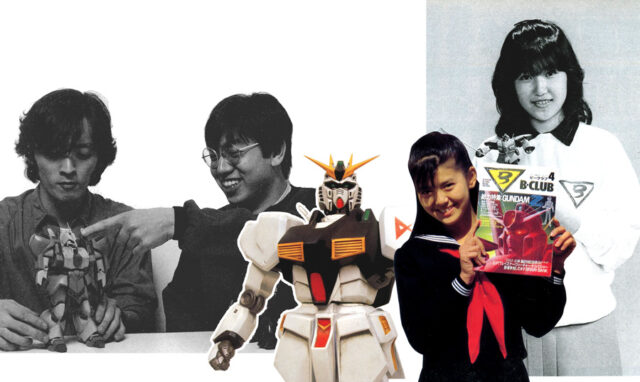During the gunpla boom of the early ’80s, giant robots were everywhere… even safety campaigns for kids. Meet Japan National Railways’ Gundam doppelganger, Railway Crossing Warrior Shadan.


During the gunpla boom of the early ’80s, giant robots were everywhere… even safety campaigns for kids. Meet Japan National Railways’ Gundam doppelganger, Railway Crossing Warrior Shadan.

Sony’s marketing campaigns for their MSX computers involved everyone from Syd Mead to Seiko Matsuda, but their most memorable bit of advertising may have been a print ad featuring a scratch-built powered suit to advertise their HiTBiT HB-F1 MSX2 machine.

Project A-Ko’s origins in the adult anime series Cream Lemon are well documented, less so the influence and shared staff between the iconic OVA and the legendary TV show, Urusei Yatsura.

Gundam fans dancing in the streets in Tokyo circa 1980. Who were the Tominoko Tribe?

During the video boom of the late ’80s, manga legend Go Nagai was involved in a series of live-action horror compilations and and films.

In the midst of the gunpla boom, Takara slapped some Dougram decals on a van and toured Japanese hobby shops to promote their model kits and encourage kids to create their own mecha model dioramas.

At a glance it may seem like the intermingling of Japanese and American horror movie motifs with manga-literate millennial artists is a relatively new phenomenon. And yet, as is often the case, this is not the first time these flavors have mingled.

As an up-and-coming young animator, Hideaki Anno worked on big animated films like Nausicaä and Macross: Do You Remember Love? For a brief time in 1984, he had a short comic feature that ran in Comic Box Jr. detailing his production experiences.

At the tail end of the gunpla boom, Bandai’s enthusiast publishing and garage kit division, B-Club, unleashed a monthly magazine and dozens of garage kits on a modeling community that was growing out of normal plastic model kits.

In 1988, Kow Yokoyama and Makoto Kobayashi stood atop the artist and model making scene. Their illustrations and model work appeared in anime, magazines, video games, and a collaborative artbook called Two Factory.